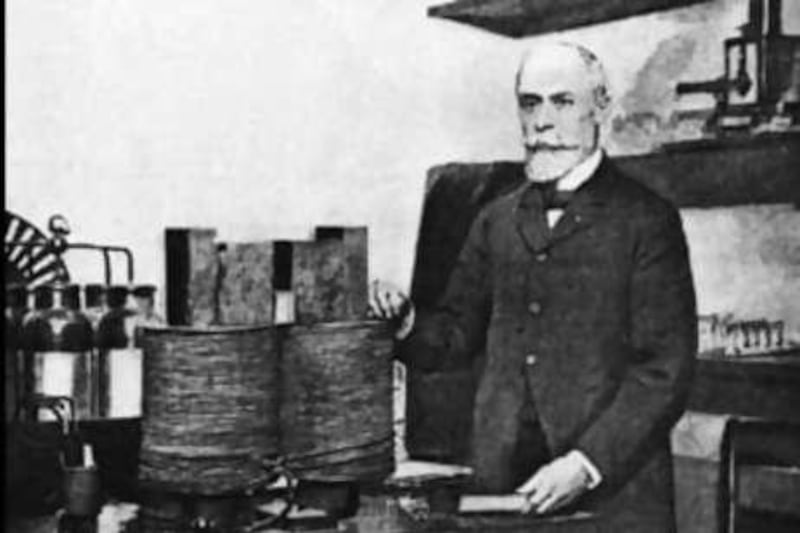Just what does it take before a revolutionary discovery is accepted by the world's scientific community? That's the question raised by renewed claims by a US-based company to have found a radically new source of energy. According to BlackLight Power (BLP) of New Jersey, prototypes of its latest power generators have just been successfully tested by a team of independent experts. As the generators are environmentally-friendly and produce energy at less than a quarter the cost of conventional sources, one might expect scientists to be hailing this breakthrough. But there's one small problem: the supposed source of the power defies conventional theories about the nature of atoms. Last week's announcement is the latest development in the long-running controversy over the claims of BLP and its founder Dr Randell Mills. Since the early 1990s Dr Mills has been working on a new theory to explain the properties of atoms. In the process, he believes he has identified new states of hydrogen that can be persuaded to release huge amounts of energy. It is a claim that is guaranteed to provoke snorts of derision among many physicists. After all, hydrogen is the simplest of all atoms, and the best-understood, its properties being found to agree with the laws of the sub-atomic world, quantum theory, with a tremendous degree of accuracy. Even so, Dr Mills insists that the world's physicists have been misled by quantum theory. Using an approach to understanding the atomic world long regarded as discredited, he claims to have replicated all the successes of the standard theory, while making many fresh discoveries as well. And chief among these is the possibility that hydrogen atoms can exist in energy states not predicted by quantum theory. Known as hydrinos, these are at the centre of the controversy surrounding BLP's claims to have uncovered a radically new form of clean, cheap energy. According to Dr Mills, when hydrogen atoms are combined with certain other elements as catalysts, they can release substantial amounts of energy - along with invisible ultraviolet light (which is the origin of BLP's enigmatic name). For many scientists, this sounds all too reminiscent of countless other claims by crackpot inventors to have found new sources of energy, from perpetual motion machines to "cold fusion" devices. Yet Dr Mills is no crackpot. Initially trained in chemistry, he switched to medicine, graduating from Harvard Medical School in record time. Then he switched again, carrying out graduate work in electrical engineering at the Massachusetts Institute of Technology. More impressive still, his theories have been published in serious peer-reviewed physics journals - the sine qua non of scientific respectability. Even so, Dr Mills's work is still regarded with grave suspicion by many scientists. Curiously few have gone public with their scepticism - and none has succeeded in proving exactly where the flaw lies in the basic theory. There is historical precedent for conventional science missing a potent new source of power. In 1896 the French scientist Henry Becquerel found that certain minerals were the source of apparently limitless energy in the form of radiation. Bequerel was awarded the 1903 Nobel Prize for Chemistry for his discovery, despite the fact no one could explain the source of the energy. The answer only became clear years later, following publication of Einstein's theory of relativity and the famous formula relating energy to mass, E = Mc2. But in the end, the arguments over whether Dr Mills's theory is correct is academic. What really matters is the validity of his claim that hydrogen is a much more potent fuel than currently believed. Demonstrating this has been the goal of BLP, and it is one that has attracted impressive support - and serious money. The company's board of directors includes a former US Assistant Secretary for Energy, an ex-chief executive of Electronic Data Systems, and a former cfo of Credit Suisse First Boston. The company has also raised US$60 million (Dh220m) in funding from utility companies such as Conectiv Energy in Delaware, investment firms and wealthy individuals. Such backers demand more than a few esoteric papers published in academic journals - and Dr Mills and his team at BLP have been determined to keep them interested. Over the last few years, they have focused on turning the theory of hydrinos into commercial power generators. In 2005, the team began work on table-top devices producing just a few tens of watts. They have now scaled up to commercial levels of power, with prototypes said to generate 50,000 watts for around 20 seconds. The generators use a special type of solid fuel rich in hydrogen, producing hydrino-based energy more than 200 times greater than that released by conventional combustion. Such claims typically cut little ice with sceptics, however. For them, extraordinary claims demand extraordinary evidence - and that can only come from replication by independent experts. BLP now says it has obtained precisely that, following the outcome of tests of its prototype generators by a team of engineers based at Rowan University in New Jersey. As well as confirming that the generators can produce up to 50,000 watts of power, the team found that the energy released could not be accounted for by conventional means. Dr Mills believes the results of these independent tests make the arguments over his theory irrelevant. "These experimental results prove that the new power source discovered in our labs has the possibility to make a profound impact in our current energy-strapped economy," he said. Whether or not Dr Mills succeeds in winning over converts remains to be seen. But there's little doubt that as the years roll by he is making things ever harder for the sceptics. Robert Matthews is Visiting Reader in Science at Aston University, Birmingham, England.
Bucking atomic theory
A revolutionary power generation source is met with scepticism but no one can say exactly why.

Editor's picks
More from the national





